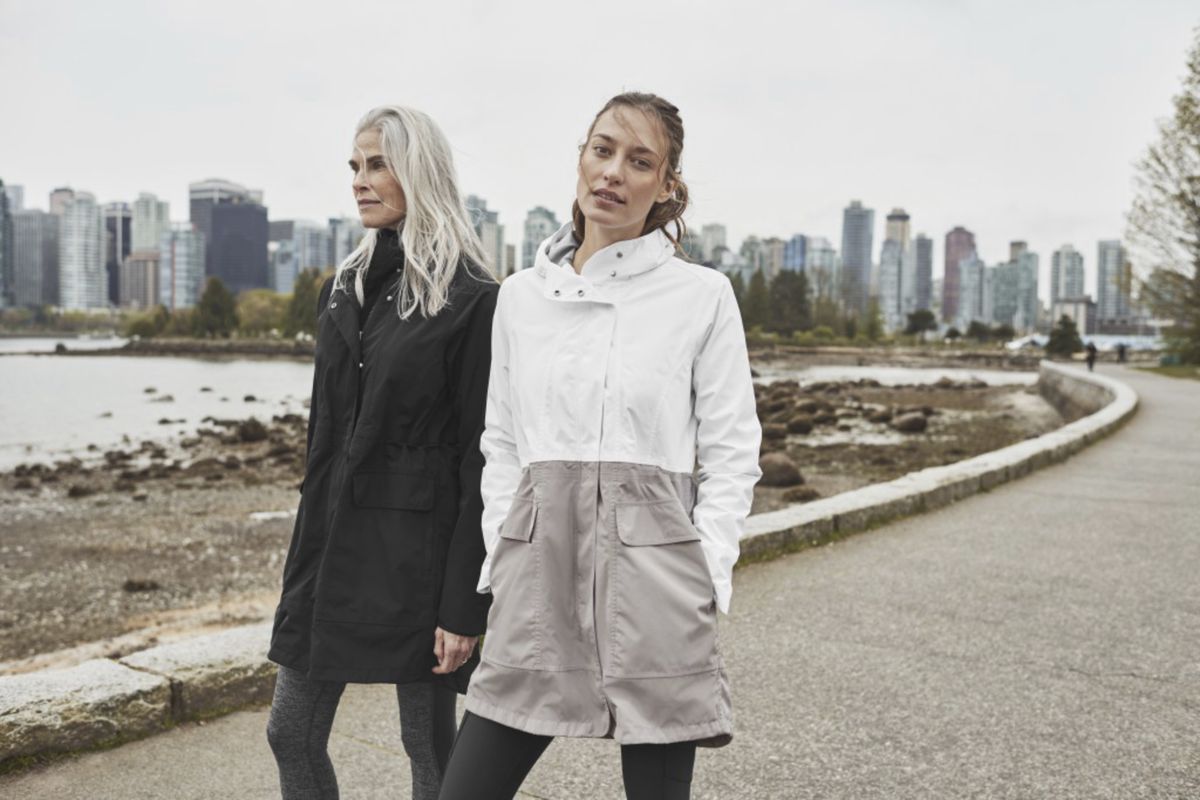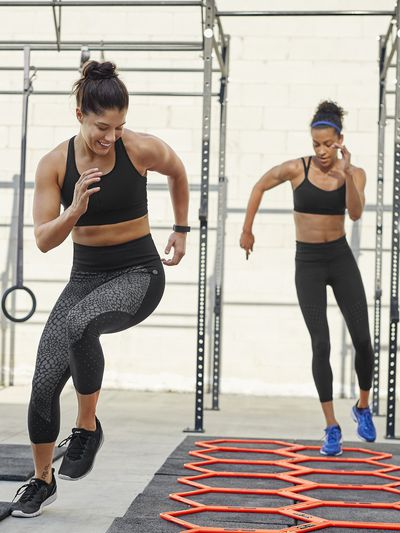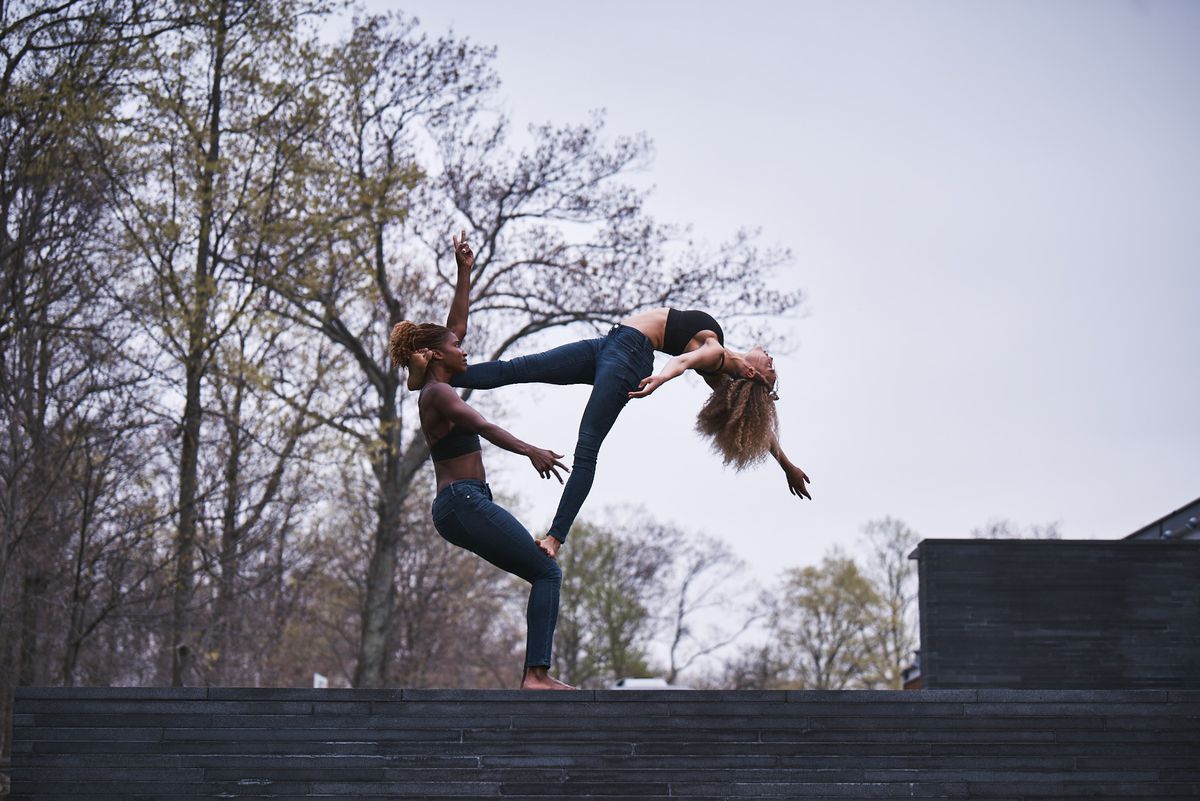
In the late ’90s, Scott Kerslake was working at an infotech company in Petaluma, California, and spending his free time surfing and cycling when he began to notice a pattern: On long group bike rides, his friends would complain that there wasn’t any fashionable quality sportswear for women. Kerslake’s riding buddies told him they wanted cycling gear that was durable enough to withstand a 50-mile bike ride but would also look cute when out and about.
Kerslake quit his job in 1998, raised $700,000 worth of seed capital from family and friends, and decided to start a women’s athletic clothing company. He named it Athleta, targeting the female athlete, and launched as an online and catalog business. Developing a small in-house label for running, hiking, tennis, cycling, golf, yoga, and swimming, as well as stocking product from brands like Patagonia and Adidas, Athleta grew rapidly.
Coming to the market when marathons and triathlons were starting to see exponential growth in female participation, Athleta brought in $18 million in 2001 and soared to $30 million just two years later. Customers loved the brand because, according to the New York Times, Athleta paid attention to color and patterns, details sports brands like Nike hadn’t yet considered. The company was also committed to testing product on real athletes, and the CEO Kerslake hired, Joe Teno, came from L.L.Bean and understood the outdoor sporting world as well.
By 2007, after Kerslake sold a majority stake of the company to Blue Highways Holdings, Athleta was circulating 13 million catalogs across the country. The fitness apparel market was ballooning at $31 billion, thanks in part to Canadian competitor Lululemon, which had blockbuster sales from its $100 leggings and an IPO in 2007. With all the interest in yoga apparel, Athleta was shipping out 21 million catalogs and cashing in $37 million worth of sales by 2008, numbers that eventually caught the eye of Gap Inc. When Gap bought Athleta in 2008 for $150 million, investors noted the acquisition was a shrewd move for Gap, giving the giant American specialty retailer plenty of “leverage.”

It’s been nearly 10 years since the Gap acquisition. At this point, when talking about Athleta’s place in the brand’s portfolio, “leverage” is an understatement. Gap and Banana Republic, legacy brands within the Gap Inc. portfolio, have been struggling for years now with identity crises,humdrum styles, a shuffle of talent, and slumping sales. Gap’s e-commerce competitor to Amazon, Piperlime, got the axe in 2015, and upscale brand Intermix, which the company bought in 2013, barely gets any attention.
On the flip side, Athleta has been the company’s main source of growth other than its affordable money-maker, Old Navy. Athleta has had an annual growth of 25 percent since 2012 and is on track to soon surpass $1 billion in sales. The brand plans to open 15 more stores this year and plenty more next year, a far cry from the rest of the gloomy brick-and-mortar space that’s seeing nonstop store closures and bankruptcies. Athleta’s store expansion is also a stark contrast to the rest of Gap; last week, Gap CEO Art Peck announced the company would be closing 200 Gap and Banana Republic stores and turning its focus to Old Navy and Athleta.
It might be surprising that a brand that’s so far from Gap’s roots is what’s carrying it — Gap was known for quite some time as the go-to for denim and classic tees. But while Gap and Banana Republic spent years chasing trends and millennials, Athleta has maintained its footing by focusing on the core customer it’s been serving since the very beginning, a customer that the rest of the shopping industry, especially fitness apparel, largely ignores: older women.
“We’re not like, ‘Oh, it’s all about millennials.’ We aren’t chasing them,” says Nancy Green, Athleta’s CEO, from Athleta’s headquarters in downtown San Francisco back in July. “We inspire her to keep living this full, healthy, active, rich life, no matter what her body type is, no matter her age.”
Green is decked out in head-to-toe Athleta, much like the rest of the employees bustling around the sprawling office just under the Bay Bridge, who all wear leggings or technical capri pants with performance tees and hoodies and look like they are ready for a Zumba class or a good hike. A 24-year Gap Inc. veteran, Green joined Athleta in 2013 after working at other brands within the company. Poring over the company’s latest catalog, Green points to images of standard-size women and a model with gray hair.
“This is our story,” she says. “It is not about a one-dimensional über-elite athlete that’s young and beautiful. Beauty, health, and wellness comes in many, many dimensions.”
In a category where youth, beauty, and weight are trumpeted by brands, marketers, and social media stars, Athleta has a different approach. It features middle-aged women in its catalogs and picks brand ambassadors that aren’t size 0. While this marketing strategy might not seem to be all that deep, it’s a generally unprecedented approach in a category like fitness. It’s why fashion models are used as the faces of sportswear campaigns (instead of more realistic depictions like athletes) and how celebrities like Kate Hudson, Carrie Underwood, and Jessica Simpson have been able to jump in and make a killing. Fitness advertising — or any advertising, really — claims to be aspirational, but Athleta chief marketing officer Andrea Mallard points out that the tactic targets shoppers’ insecurities.
“Every marketing message in the world right now is largely about being terrible to women,” Mallard says. “You are never pretty enough, you’re never young enough, you're never thin enough, you’re never rich enough. All you have to do, really, is celebrate real women, and the power of it is to not make it feel like a big political act. Because you are allowed to be considered beautiful and interesting and powerful when you’re not 40 or younger anymore.”
Athleta’s strategy, on the other hand, is the perfect way to cater to Athleta’s customer demographic, where the age range is 35 to 55. Earlier this year, fitness blogger Michelle Cox wrote in a post titled, “An Open Letter to Athleta – A Tearful Thank You” that this type of inclusivity is “how we will empower our daughters to love their bodies, finding their value and strength in healthy bodies, educated minds and loving hearts.” As Racked’s Cheryl Wischhover noted in her ode to the brandback in June, “A lot of people would probably still classify the regular clothes at Athleta as mom-wear, with all the attendant undertones that term entails, but I’ve leaned hard into this identity... It’s an image I buy into again and again.”
“I think Nancy Green’s been really prescient, tapping into what’s been missing from the athleisure market and factoring in lots of underserved categories — age range for one,” adds Melisse Gelula, chief content officer at fitness and wellness site Well + Good. “Moms (and grandmoms) do yoga, not just twentysomething Instagrammers. Using ‘realistic imagery of women’ is becoming more popular, but it’s been part of Athleta’s DNA.”
While Mallard says the ethos of Athleta speaking to real women is done naturally and not as a political act, it is something the company has come to rely on. In April 2016, Athleta began trumpeting the case through its campaign “Power of She,” where it pledges to speak with, and market to, real women. Mallard admits that the company’s website could use some nudging in diversity in this direction, though. But CEO Green adds that truly serving women of all ages and sizes doesn’t just mean marketing to them, but designing for them as well, something Athleta’s design team is cogent about.
“It’s not only that young people want this and old people want that, but we do understand that bodies do change as you get older, and the great things about the category that we’re in is the fabrics that we use are unbelievable in terms of the performance, stretch, and comfort,” Green says. “As your body changes, as you age, you may decide that you want things to be worn differently. Maybe she does want a longer top to cover those tights, so we think about different proportion and how she lives her life. We know that what is most important to all of our customers, regardless of age, is versatility.”

Design and marketing aside, part of what’s made Athleta so successful is its store footprint, where the brand offers free fitness classes and hosts community events on dermatology and wellness. This isn’t all that original — Lululemon was doing it first. But where Lululemon sales have slowed down in recent years since the shopping craze it once spawned, Athleta’s keep accelerating. Just last month, Lululemon announced it was closing stores for Ivvia, its tween line that launched in 2009. Last year, Athleta launched Athleta Girl, a tween brand of its own aimed at making Athleta become what Green calls a “brand for mothers and daughters,” and this fall, all Athleta stores will feature Athleta Girl, which used to only be in certain locations. Green says the company’s blueprint is quite different from its Canadian competitor.
“Lulu is very exclusive, and it is very intimidating,” she says. “We’re positioned against that. Being inclusive and welcoming is critical. The number one thing is we want them to feel welcome. I want them to feel that they’re in a place where they are understood and respected for who they are.”
When Green joined Athleta as CEO, the company was offering much more of a niche range of product — mainly apparel just for sports and yoga. Over the years, though, Athleta has expanded its offerings beyond fitness and into lifestyle: Just last month, it launched a fancy loungewear collection Restore, which is made up of pieces for in between workout classes (think fancy pajamas, but ones you wouldn’t dare sleep in).
Next on the docket is denim, which Athleta just debuted after a soft launch in the spring. Sarah Carlson, the company’s vice president of design, tells Racked the launch of Athleta denim isn’t necessarily to promote wearing jeans during yoga, but to make the denim category better. (And perhaps bring the brand closer to Gap’s original roots?) Athleta’s denim uses its Sculptek fabric, which sculpts and compresses while still promising to be wearable.
“Most of the compressive denim out there tends to be less comfortable, and our strategy was to make it comfortable,” says Carlson. “That means she could be on a 10-hour plane trip wearing them and feel really good. The fabric has this amazing fiber that will keep its place, so it won’t bag out. They look and feel great.”
The goal with all the category expansions — the denim launch, the Restore collection — isn’t only for Athleta to move outside of activewear. It also helps Athleta ride the tides of speculation that the athleisure trend is slowing down, as there’s constant chatter that leggings and denim are in, and then out, and then in again — the results of digital making trends highly unpredictable.
As far as Gap Inc. goes, Green admits Athleta has done a better job in engaging with customers, be it with in-store events or with testing product initially on athletes who are customer ambassadors before rolling them out to general shoppers. Gap, she says, is still working on finding its identity, and Athleta’s business model is now something other companies within the larger Gap portfolio are studying.
“Gap is figuring it out,” she says. “When Gap is its best, it’s always in the center of the cultural conversation. They are building a team right now and will be fine-tuning their reason for being, and they’re going to connect differently with customers. But the most important thing is that we’re actually stronger as a portfolio and an enterprise together with these brands because we can learn from each other.”
Article and Photo Retrieved from
https://www.racked.com/2017/9/14/16304458/athleta-gap-older-women